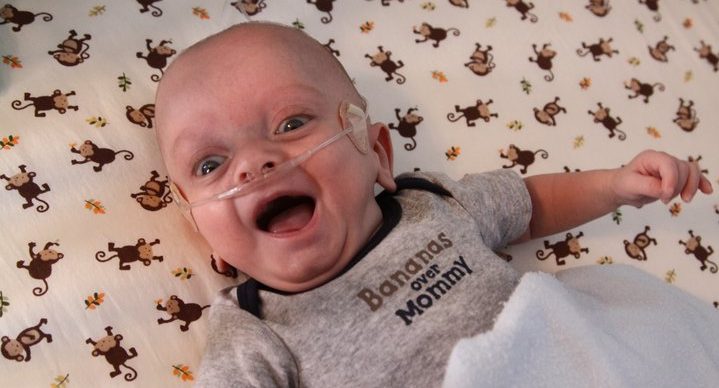
Bringing a baby home on oxygen may feel scary, but with a little practice you will learn quickly and feel empowered caring for your baby. Giving a baby extra oxygen involves a lot of monitoring, handling foreign equipment and stepping out of your comfort zone to learn medical terminology and techniques. One relief is that you will work closely with your health care provider and oxygen company to make sure you are receiving assistance and your baby is getting the care needed.
Why would a baby need oxygen at home?
Babies are usually breathing on their own before discharged from the hospital, but some may need extra support at home. The most common reason for extra oxygen is bronchopulmonary dysplasia or BPD. Many preemies are at risk for BPD, a form of chronic lung disease, as a result of mechanical ventilation and long-term use of oxygen. Most babies heal from BPD, but some may have breathing difficulty throughout their life.
In addition to BPD, there are other factors such as apnea, complete pauses in breathing, or poor weight gain that may cause a baby to be sent home from the hospital on supplemental oxygen.
What type of equipment do you need to provide your baby with oxygen at home?
- Oxygen (the type will be determined by the doctor)
- Nose cannula
- Tape (different types of tape, such as latex-free, to see how your baby’s skin might react); O2 Kid Lids has a great alternative for holding oxygen tubing on a baby’s face
- Gentle adhesive remover
- Room humidifier & saline to combat dryness
- Pulse oximeter, device that measures whether you baby is achieving the critical blood oxygen saturation, may be recommended by the doctor
What can you expect when bringing your baby home on oxygen?
A baby on oxygen should not inhibit you from going places. While it may be a little more challenging, practice makes permanent, and you will be out and about in no time. Take small walks around your backyard or neighborhood to take advantage of fresh air, relieve stress, and practice the logistics of portable oxygen tanks, sometimes called “strollers.”
What precautions must be taken to ensure your home is safe?
Oxygen is highly flammable, so you will be provided with “no open flames” signs for your door and windows to remind you and others to take caution. Have your oxygen company help you decide the best place to set up the oxygen tanks in your home. Do not place tanks in a room with an open flame, sparks, or gas stoves. Smoking near oxygen tanks is strictly prohibited. Follow the instructions on the tanks and post the oxygen tank company’s number in a prominent place in your home.
Cheryl Silinskas, a seasoned oxygen mom, made posters on how to use the oxygen and step-by-step emergency procedures to help her family and first responders to stay focused during a crisis.
The prospect of bringing a baby home with extra oxygen support may feel daunting, many parents like the benefit of going home and returning to a sense of normalcy outweigh the initial anxiety and fear around using the equipment and the process.
